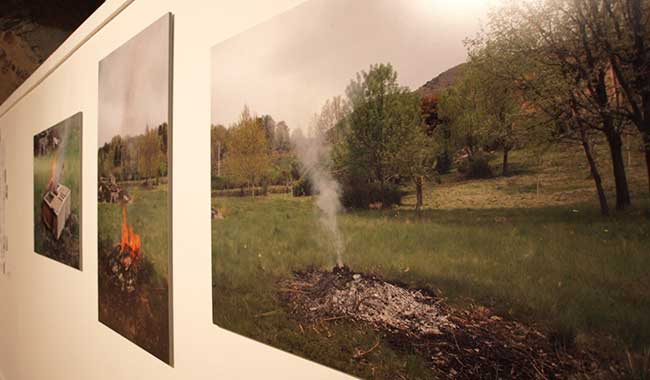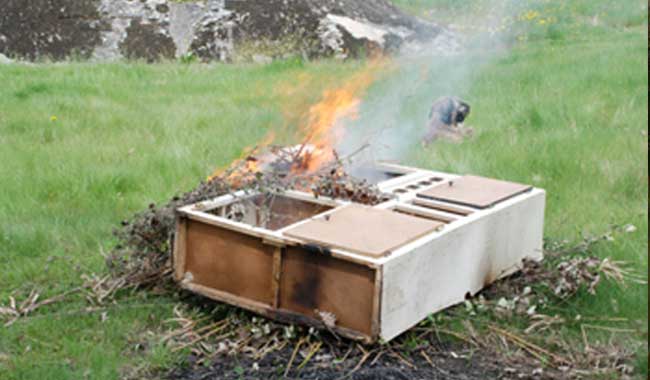

BURNING DOWN THE HOUSE
Instalación. Fotografías, vídeo(18’27’’) y cenizas
2011


To cremate is to reduce something to ashes, usually a corpse, with the aim of “objectifie” his death and not to forget him. So, the funerary urn that collects a relative ashes (or the sepulcher) is the place built as the absence, and therefore, as an appeal to memory. They are, that way, shown as containers of the essence of what it is missed because inside them is the deceased reduced to an object and a place.
This objectification of the essence of something that lacks life, like a deceased, I take it a little farther. The objectification of an object, we are talking about a kind of “metaobjectification".
An old family piece of furniture which useful life has travelled through several generations since its making (specifically from the 50,s to 2011). The object moves from a useful life and daily routine presence to being out of place, stored as another object that is not removed, precisely because of all its meaning. The piece of furniture in itself is already death, it doesn´t involve any kind of use that would be comparable to human being life, so it receives a fitting cremation, worthy being remember. The strange of the performance in itself is that the same rite of burning “that” become a family act, as if it was a incineration of a loved one.
In the scene can be seen several members of my family who would like to be there, that way, conversation about the piece of furniture come up, the life it had and other memories related to it.
The importance of the piece of furniture burning is not only the death of the object, but the creation of a place to remember it, and how it is from that moment in the mind and memory of people who attended there. The place not only allows the remembrance of the action, but is a sign of the individuals, of themselves, signs that allow them to see themselves both, collectively and individual.
So, in the setting would appear three levels of meaning. There is a first level in which three images are shown from different stages of the burning to guide the audience through the development of the action (images will be a measurement of 100x70cm approximately). A second level, in which appear a small screen that reproduce the video (without sound) that captures all the action as a essential file of documentation. And a last level in which appear the ashes of the piece of furniture in a clear case/container completely aseptic, with the purpose of not giving it more meaning that a simple container because the really important thing and the essence of the piece of furniture is inside it.